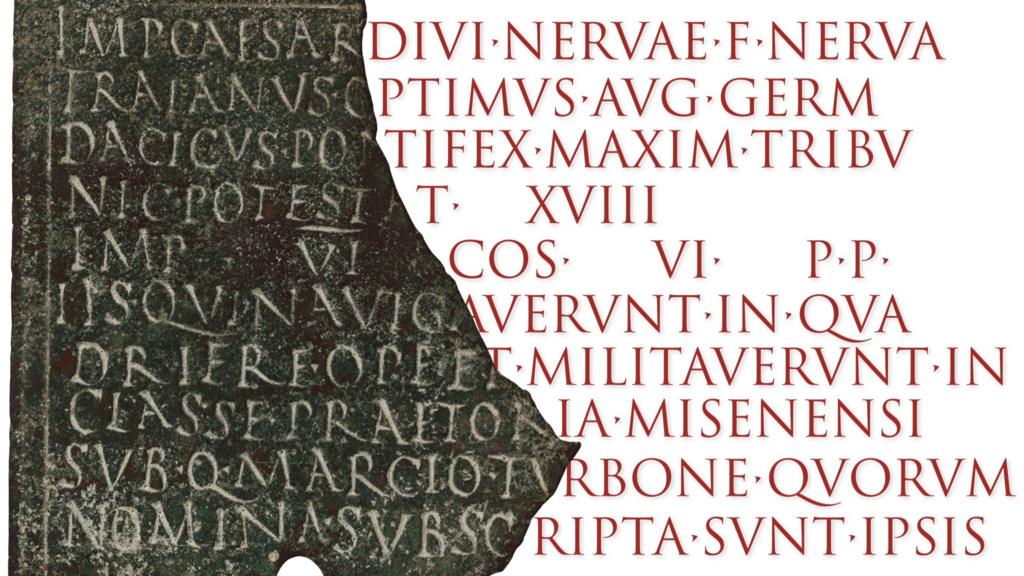Researchers are hailing a new AI tool with the potential to revolutionize our comprehension of human history.
While artificial intelligence has previously aided in deciphering ancient Roman scrolls, a novel system takes this application significantly further.
This system is capable of reconstructing missing words from ancient Roman inscriptions found on monuments and everyday artifacts, as well as determining their age and geographical origin.
Given the propensity for AI to introduce errors even in the analysis of contemporary texts, concerns exist that over-reliance on this technology could distort, rather than enhance, our understanding of history.
However, esteemed historian Prof Dame Mary Beard of Cambridge University has characterized the technology as potentially “transformative” for the study of past events.
She suggests that the system, named Aeneas after a prominent figure in Greek and Roman mythology, could expedite the process by which historians piece together the past from ancient texts.
“Breakthroughs in this very difficult field have tended to rely on the memory, the subjective judgement and the hunch/guesswork of individual scholars, supported by traditional, encyclopaedic databases. Aeneas opens up entirely new horizons.”
Ancient inscriptions are often incomplete, of unknown origin, and lacking date information, or even all three. Historians and classicists attempt to fill in these gaps by referencing texts with similar wording, grammar, appearance, and cultural context, known as ‘parallels.’ Due to the formulaic nature of ancient inscriptions, historians can frequently infer the missing portions of a sentence.
This meticulous process can span months or even years but yields new perspectives into our understanding of the past, according to Dr. Thea Sommerschield, a historian at Nottingham University and co-leader of the research.
“Inscriptions are the earliest forms of writing. They are so precious to historians because they offer first-hand evidence for ancient histories, languages and societies.
“But they degrade over the centuries and interpreting them is like solving a gigantic jigsaw puzzle with tens of thousands of pieces, of which 90 per cent are lost.”
This is not the first instance of AI being employed to reconstruct missing elements of Roman history.
Earlier this year, a separate team of scientists digitally “unwrapped” a severely charred scroll from the Roman town of Herculaneum using X-ray imaging and AI, revealing rows and columns of text.
Dr. Sommerschield collaborated with Dr. Yannis Assael, an AI specialist at Google DeepMind, to develop Aeneas, which automates the process of contextualization based on parallels with remarkable speed.
Aeneas utilizes an extensive database of 176,000 Roman inscriptions, incorporating images, and employs a refined AI system to identify relevant historical parallels, thus assisting historians in their work, according to Dr. Assael.
“What the historian can’t do is assess these parallels in a matter of seconds across tens of thousands of inscriptions, and that is where AI can come in as an assistant.”
The team tested the system’s capabilities by dating a renowned Roman text located at the Temple of Augustus in Ankara, Turkey, often referred to as the “queen of inscriptions” due to its significance in understanding Roman history. The Res Gestae Divi Augusti, an account of his life and accomplishments, was composed by Augustus, the first Roman Emperor. Its precise date remains a subject of debate among historians.
Aeneas successfully narrowed down the possibilities to two likely ranges: 10-20 CE as the most probable and 10-1 BCE as a slightly less likely range. This outcome demonstrates the system’s accuracy, as these two periods are widely accepted by historians as the most plausible.
In trials conducted with 23 historians, the team discovered that historians using Aeneas achieved more precise results compared to either Aeneas operating independently or historians working alone.
“The feedback was that Aeneas was not only allowing the historians to accelerate their work but it also revealed parallels that they had previously not identified,” according to Dr. Sommerschield.
“And that is the future value of this work, not just to do what we do faster and better but also to do things we didn’t think to do before.”
Acknowledging the potential for AI interpretation to be flawed, even in modern texts, concerns regarding potential inaccuracies have been raised. However, Dr. Assael emphasizes that Aeneas is intended as a tool to guide historians, not to replace them.
“We acknowledge that AI might not be able to get everything right all the time and I don’t think historians will work under that expectation,” he said.
He clarified that the ultimate responsibility for evaluating Aeneas’s predictions and determining their validity rests with human historians.

